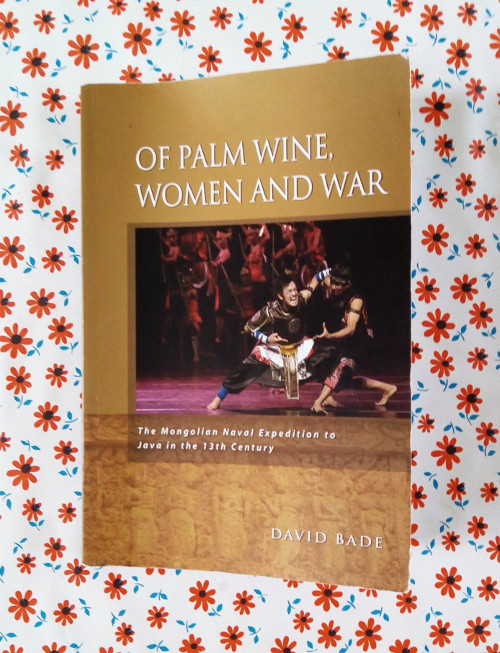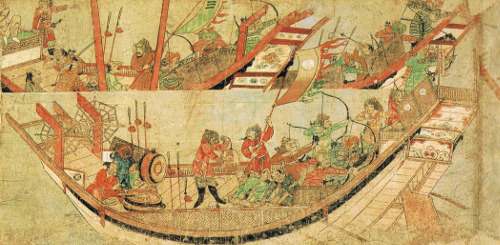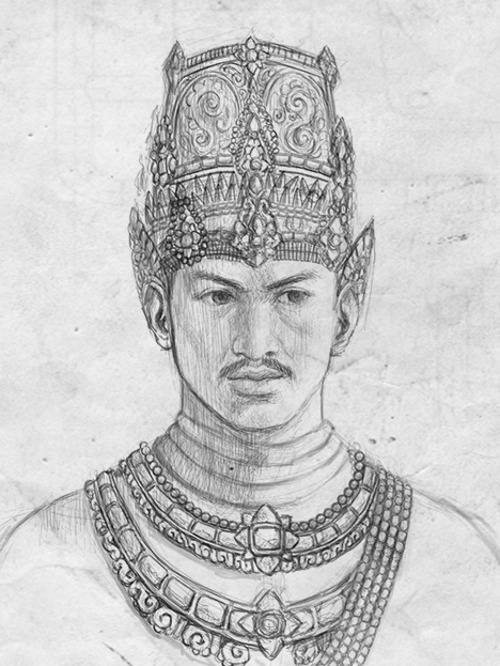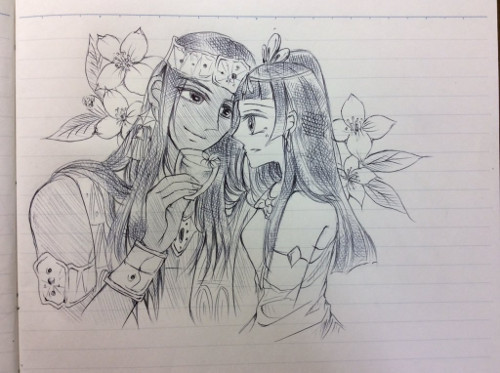
In 1293, a year before the end of his reign, the Great Khan Khubilai, founder of the Yuan Dynasty, dispatched an army to Java.
David Bade’s “Of Palm Wine, Women and War” is less about that expedition itself than the historiography of that expedition – how it is remembered, and by whom.
Bade:
“ My original interest in the whole episode was the existence of these views of the Mongols which are so different from those views propagated among the Christian and Muslim populations of Eurasia. How is it that the Europeans remembered hordes from Hell but the Javanese remembered the friends of Wiraraja, the jolly good fellows who came to the aid of the great and good king Wijaya in his hour of need? ”
+
Notes:
1.
As mentioned above, the way Javanese source texts remember the Mongols bucks convention.
Contrast the Japanese on Khubilai’s two invasions of Japan: “ … there was fortunately no third attack, but the Bakufu has exhausted its strength in national defence almost to the point of ruin.”
To the Javanese view of 1293: a time of romance and princely derring-do, of heroes winning great loves and great kingdoms, with the Mongols as helpful foreigners – kinda naive, kinda hapless.

2.
Chinese sources view the Javanese expedition as a failure.
It is a force of 20,000 men and loads of materiel; it endures storms and starvation; when it gets to Java it faces a confusing political landscape, sides with Tuhan Pidjaya, a tricksy local prince – “ … Tuhan Pidjaya secretly left our soldiers and attacked them by which the whole party came to grief.”
Short 3,000 lives, the expedition returns to China, and Khubilai chastises its generals for bungling the thing.
3.
According to Chinese texts, Khubilai sends a force to Java to answer an insult:
“ … that they have lately cut the face of the imperial envoy Meng Ch’i and that you have come to punish them for that.”
Bade flags the envoy figure as interesting. The Mongols were universalists – just as there was one Heaven under Tengri, there was one Earth under the Khagan. All the wars they fought were *civil wars*; they sent envoys to ask for submission; armies followed only when the envoys were rejected.
Proof of Java’s “rebellion” was essential for Yuan court writers to justify the 1293 expedition.

(Uncle Khubilai looks kinda jolly what.)
4.
For the Javanese, the story of the late 13th Century is the story of the founding of Majapahit, Java’s greatest empire.
The source texts mainly concern themselves with events surrounding Raden Wijaya (Tuhan Pidjaya), Majapahit’s first king: what he did; the princesses he loved and rescued; how he won his kingdom.
In this context the Mongols are almost a deus ex machina. They arrive in Java to assist Wijaya against the usurper and hostage-taker Jayakatwang. Some sort of hand of Fate pushing Wijaya to victory.
5.
Javanese narratives fixate on the role of a few princesses – chiefly Puspawati and Pusparasmi, daughters of the deposed king of Singhasari.
Their romance with Wijaya takes centre stage. He and the Mongols attack Jayakatwang, mainly to rescue the younger of the two from Jayakatwang’s palace.
When the Mongols want to take Pusparasmi home to wed their king, Wijaya “asks her if she wouldn’t rather be the wife of the King of Tatar. She declines, and Wijaya decides he will fight to the death for her. A battle follows, the Tatars are defeated … “
6.
According to Bade, the nature of authority in Java focused on the duality of king and queen:
“ ‘the queen embodied the king’s royal authority (rajalaksmi) and the king’s marriage to the queen ensured him legitimate possession of the authority he required to rule’ … Only the king who loved and was loved had authority and could receive the willing submission of the people.”
The princesses are stand-ins for Java itself. Wijaya must love and fight for their welfare; this is proof he loves and fights for Java as a whole. The foundation myth of Majapahit is necessarily a romance.

7.
Bade points out that the Chinese texts never mention the princesses. Similarly, the Javanese texts never mention the envoy.
The two separate strands of history do not reference each other until the modern era:
“ … from the time of the composition of the ‘Desawarnana’ in 1365 until the mid- or late-19th century the Javanese may not have known where the land of Tatar was nor that the King of Tatar was Khubilai … ruler of China … it was not until the mid-19th century that Chinese and European scholars could locate the ‘Koua-wa’ – Java – of the ‘Yuan shi’ … both the court historians and the poets in Majapahit and China alike were writing about matters which happened ‘long ago and far away’. “
What the Mongols thought important were not what the Javanese thought important.
8.
Historians have tended to favour the Chinese / Mongol sources, because they are seen as dispassionate, more factual.
The Javanese texts are dismissed as fanciful literature: epic poems that involve magic, sleep mantras, princes ascending into heaven, etc.
Bade rightly points out that is a massive omission.
At base level, no matter their factual reliability, Javanese narratives offer insights into how Majapahit saw / wanted to see itself. (Some sources were even authored by eye-witness players – Jayakatwang wrote the “Wukir polaman”; Wijaya wrote the so-called Kudadu inscription.)
9.
“ Nordholt remarks that ‘There are in Balinese literature no separate genres called “history” and “fiction”. Consequently the distinction between true stories and (false) fantasies makes little sense.’ He proposes that one must … view the babad as political documents which ‘construct – and re-phrase – that past in order to make the present meaningful’ … “
10.
Also, there’s an argument here about the idea of What Is History, itself:
“ [Roy Harris] argued that the historians’ versions (historiae) are shaped by opinio as much as the reverse, and that both are dependent upon opinio – what people said and say happened – because that is all any of us have at our disposal. Once this is acknowledged, historiae and opinio both matter, both shape our historical orientations, and both are debatable. The kidung [ie: Javanese] literature and Shakespeare’s histories, whetehr the professional historians like it or not, shape our understanding of the past as well as the questions that we ask and how we read and write historiae. ”

11.
Bade attempts to argue against the idea that the princesses in the Javanese stories are just “pawns in the forging and severing of alliances … the ultimate prizes for successful heroes”:
“ … the Javanese narratives tell the story of the submission to love rather than to power … Wijaya submitted to the princesses, not to the King of Tatar … the great period of Majapahit was great because the king was a true lover. … we may see instead a didactic poem about the centrality of love, admonition to the readers to remake the world as lovers like Wijaya, not as grasping usurpers of power who capture, abduct and try to dominate others, including and especially the female other. ”
Bade waxes a little saccharine, here, and I’m wary of how true-love-of-a-woman-will-redeem-a-man it all sounds.
12.
Disappointingly, the palm wine of the title barely makes an appearance. (It’s a reference to Wijaya partying with the Mongols after their victory over Jayakatwang.)
+
( Image sources:
https://commons.wikimedia.org/wiki/File:Takezaki_suenaga_ekotoba3.jpg
https://commons.wikimedia.org/wiki/File:YuanEmperorAlbumKhubilaiPortrait.jpg
https://en.wikipedia.org/wiki/File:Illustration_of_Raden_Wijaya.jpg
https://soumen667.deviantart.com/art/Raden-Wijaya-and-Rajapatni-701957521 )
+
Text by Zedeck Siew. This post was originally published April 7, 2018 on Zedeck’s blog.

